Operation Blue Star
Operation Blue Star was an Indian military operation carried out
between 1 and 8 June 1984, ordered by Prime Minister Indira Gandhi to
remove militant religious leader Jarnail Singh Bhindranwale and his
armed followers from the buildings of the Harmandir Sahib complex in
Amritsar, Punjab. In July 1983, the Sikh political party Akali Dal's
President Harchand Singh Longowal had invited Bhindranwale to take up
residence in Golden Temple Complex to evade arrest.Bhindranwale later on
made the sacred temple complex an armoury and headquarters. In the
violent events leading up to the Operation Blue Star since the inception
of Akali Dharm Yudh Morcha, the militants had killed 165 Hindus and
Nirankaris, even 39 Sikhs opposed to Bhindranwale were killed. The total
number of deaths was 410 in violent incidents and riots while 1,180
people were injured.
The operation had two components — Operation
Metal, confined to the Harmandir Sahib complex, and Operation Shop,
which raided the Punjabi countryside to capture other suspects.
Following it, Operation Woodrose was launched in the Punjab countryside
against the baptized Sikhs. The operation was carried out by Indian Army
troops.Casualty figures for the Army were 83 dead and 249 injured
According to the official estimate presented by the Indian government,
1592 were apprehended and there were 493 combined militant and civilian
casualties.High civilian casualties were attributed to militants using
pilgrims trapped inside the temple as human shields.
The military
action in the temple complex was criticized by Sikhs worldwide who had
interpreted it as an assault on Sikh religion. Many Sikh soldiers in the
Army deserted their units,several Sikhs resigned from armed and civil
administrative office and several returned awards and honours they had
received from the Indian government.
Nearly five months after the
operation, on 31 October 1984, Indira Gandhi was assassinated in
vengeance by her two Sikh bodyguards, Satwant Singh and Beant Sing
Public outcry over Gandhi's death led to the killings of more than 3,000
Sikhs in the ensuing 1984 anti-Sikh riots.
Golden Temple
The
militants were able to claim a safe haven in the most sacred place for
the Sikhs due to the whole or part support received by them from the key
sikh religious leaders and institutions such as the SGPC, AISSF and
Jathedar (head) of the Akal Takht. The support was either voluntary or
forced by using violence or threat of violen Several religious leaders
who spoke against the occupation of Akal Takht were murdered by
followers of Bhindranwale.
The Golden temple complex afforded the
militants based inside a facade of fighting a "holy war". It also
provided the militants access to new potential recruits from among the
visitors. Several multi storied buildings were located around the
Parikrama (walkway) around the reservoir of the temple that provided
rooms and offices that were taken over by the militants. The temple
complex also provided logistical advantage to the militants with easy
access to food, water and communication lines. Further the sanctity of
the Golden temple provided protection from arrests by the security
forces who preferred not to enter the Temple premises so as not to hurt
the religious sentiments of the Sikhs.
Jarnail Singh Bhindranwale in Harmandir Sahib
Golden temple with Akal Takhat on the right.
On 13 April 1978, the day to celebrate the birth of
Khalsa, a peaceful
Sant Nirankari
convention was organized in Amritsar, with permission from the Akali
state government. The practices of "Sant Nirankaris" sect of Nirankaris
was considered as
heresy by the orthodox sikhism expounded by Bhindranwale. Bhindranwale declared that he would not allow this convention and would
go there and cut them to pieces. A procession of few hundred Sikhs led by
Bhindranwale and Fauja Singh of the
Akhand Kirtani Jatha left the Golden Temple, heading towards the Nirankari Convention.
[30] Fauja attempted to behead Nirankari chief
Gurbachan Singh but was shot dead by his bodyguard, while Bhindranwale escape In the
ensuing violence, several people were killed: two of Bhindranwale's followers, eleven members of the Akhand Kirtani Jatha and three Nirankaris.
[28]
Bhindranwale's followers began keeping firearms and fortified the
Gurdwara that served as the headquarter of religious center Damdami
Taksal.
On 24 April 1980, The Nirankari head, Gurbachan was murdered. Bhindranwale took residence in
Harmandir Sahib when he was accused of the assassination of Nirankari Gurbachan Singh.
[33]
Police could not pursue him inside the Golden temple premises for fear
of hurting the religious setiments of the Sikh community.
On 9 September 1981,
Lala Jagat Narain, the founder editor of the newspaper
Punjab Kesari,
was murdered. He was viewed as a supporter of the Nirankari sect and
had written several editorials that had condemned the acts of
Bhindranwale. Bhindranwale declared that the killers of Gurbachan and Lala deserved to be rewarded
.
Police again suspected Bhindranwale in the editor's murder and issued a
warrant for his arrest. On 20 September 1981, after absconding for
several days, Bhindranwale surrendered to the police.His followers in order to obtain his release initiated a month long
campaign of violence. They attacked Hindus, derailed trains, and even
hijacked an
Air India Plane[31][34] He was released on 20 October after Home Minister of India declared lack of evidence.
[35]
Bhindranwale had risen to prominence in the Sikh political circle with his policy of getting the
Anandpur Resolution passed, failing which he wanted to declare a separate country of
Khalistan as a
homeland for Sikhs. Indira Gandhi, the leader of the Akali Dal's rival
Congress, considered the Anandpur Sahib Resolution as a secessionist document. The Government was of the view that passing of the resolution would have allowed India to be divided, making a Khalistan
Bhindranwale was reportedly backed by
Pakistan's ISI
on his radical separatist stand, plans and operations. Bhindranwale had
started the efforts for his demand in 1982, and by mid-1983 had managed
to gain support for his plan to divide India.
[38]
ISI reportedly supported and helped him in spreading militancy in the
Indian Punjab state. The arms and ammunition used by his group were
provided by ISI.
Guru Nanak Niwas
In July 1982, the then President of
Shiromani Akali Dal,
Harchand Singh Longowal
invited Bhindranwale to take up residence at the Golden Temple complex
to escape arrest. He called Bhindranwale "our stave to beat the
government."
[39] On 19 July 1982, Bhindranwale anticipating his imminent arrest
[28] took shelter with approximately 200 armed followers, in the Guru Nanak Niwas (Guest house), in the precincts of the
Golden Temple.
[40] Bhindranwale had made Golden Temple complex his headquarters.
[40] From here he met and was interviewed by international television crews.
[40]
On 23 April 1983, the Punjab Police
Deputy Inspector General A. S. Atwal was shot dead as he left the Harmandir Sahib compound by a gunman from Bhindranwale's group.
[41] The following day, after the murder, Longowal claimed the involvement of Bhindranwale in the murder.
[42] Reportedly, militants responsible for bombings and murders were taking shelter in some
gurdwaras in Punjab.
[43]
Punjab assembly noted that the murder in the temple premises confirmed
the charges that the extremists were being sheltered and given active
support in religious places and the Guru Nanak Niwas. While Bhindranwale
was openly supporting such elements.
[44] However, the Congress-led government declared that it could not enter the gurdwaras for the fear of hurting Sikh sentiments.
[43] After the murder of six Hindu bus passengers in October 1983, President's rule was imposed in Punjab.
[45]
Occupation of Akal Takht
Bhindranwale and his followers occupied Akal Takht in December 1983
During the debate in the
Parliament of India
members of both the houses demanded the arrest of Bhindranwale. Sensing
a prospect of his arrest from the hostel premises, he convinced the
SGPC president Tohra to set up his headquarter in Akal Takht (Shrine
representing the temporal power of God) in the Golden temple.
[46]
The temple high priest protested this move as a sacrilege since no Guru
or leader ever resided in Akal Takht that too on the floor above
Granth Sahib but Tohra agreed to Bhindranwale's demand to prevent his arrest.
[46] On 15 December 1983, Bhindranwale was asked to move out of Guru Nanak Niwas house by members of the
Babbar Khalsa
who acted with Longowal's support. Babbar Khalsa had also the support
of the Congress party. Longowal by now feared for his own safety.
[35]
Tohra then convinced the high priest to allow Bhindranwale to reside in
the first floor of Akal Takht as he had nowhere to go to avoid arrest.
[46] Bhindranwale had assumed that the sacredness of the shrine would provide him immunity from arrest.
[47]
Bhindranwale claimed that he had to move to Akal Takht as Morcha
dictator Longowal was negotiating with the government for his arrest.
[46] By December 1983, Bhindranwale and his followers had made the Golden Temple complex an
armoury and headquarter for extremist activities.
[14][35]
Few leaders raised their voice against Bhindranwale in the Golden
Temple and other Gurudwaras across the state. Among the prominent ones
was Giani Partap Singh, an eighty year old spiritual leaders and a
former Jathedar of the Akal Takht, Partap had openly criticized
Bhindranwale for stocking arms and ammunition in the Akal Takht.
Bhindranwale's occupation of the Akal Takht was called an act of
sacrilege. Partap was shot dead at his home in Tahli Chowk. Other
dissenters were also killed. They included Harbans Singh Manchanda, the
Delhi Sikh Gurudwara Management Committee president,
[48]
Niranjan Singh, the Granthi of Gurudwara Toot Sahib, Granthi Jarnail
Singh of Valtoha and Granthi Surat Singh of Majauli. All those who spoke
against Bhindranwale were perceived as his enemies who in turn were
branded as enemies of the Sikh faith.
[28] Bhindranwale's group were killing the Sikhs who had been speaking against Bhindranwale and the idea of Khalistan.
[49] The Sikh religious leadership had heard and understood the message being spread and they had already succumbed to their fear.
[28]
Negotiations
In January 1984, India's secret service
Research & Analysis Wing (RAW) prepared a covert plan codenamed
Operation Sundown involving special forces to abduct Bhindranwale from the Golden Temple complex.
[50] A RAW unit was formed to rehearse Operation Sundown in the
Sarsawa Air Force Base in
Uttar Pradesh. But the operation never materialized due to Indira Gandhi’s rejection. It would have caused numerous casualties as
collateral damage,
the Golden Temple being one of the most visited sites in Punjab. It
would have also hurt the religious sentiments of the Sikhs.
[32] Other options such as negotiations were opted for instead.
The government sent a team led by
Narasimha Rao to try to convince Bhindranwale to back out but he was adamant.
[32] The negotiations failed and the law and order situation in Punjab continued to deteriorate.
[32]
Indira Gandhi tried to persuade the Akalis to support her in the arrest
of Bhindranwale peacefully. These talks ended up being futile.
[32]
During the days before the assault, government representatives met with
Bhindranwale in a last ditch effort to negotiate a truce. Bhindranwale
warned of a backlash by the Sikh community in the event of an armed
assault on the Golden Temple.
[51]
On 26 May, Tohra informed the government that he had failed to
convince Bhindranwale for a peaceful resolution of the crisis and that
Bhindranwale was no longer under anyone's control.
[52]
Faced with imminent Army action and with the foremost Sikh political
organisation, Shiromani Akali Dal (headed by Harchand Singh Longowal),
abandoning him, Bhindranwale declared "This bird is alone. There are
many hunters after it".
[52] In his final interview to Subhash Kirpekar, Bhindranwale stated that
Sikhs can neither live in India nor with India.[53]
Indira Gandhi then gave her permission to initiate Operation Blue Star on the recommendation of
Army Chief Arun Shridhar Vaidya. She was apparently led to believe and had assumed that Operation Blue Star would not involve any civilian casualties.
[54] The assumption was that when confronted Bhindranwale would surrender to the Army.
[55]
Preparations
Fortification of Golden Temple
The
violence rose to its peak in the months before Operation Bluestar and
the Golden Temple was allegedly being defiled with weapons. An arsenal
had been created within the Akal Takht over a period of several months.
Trucks engaged for
kar seva
(religious service) and bringing in supplies for the daily langar were
smuggling in guns and ammunition. The police never attempted to check
these vehicles entering the Golden Temple, reportedly on instructions
from superiors. During a random check one such truck was stopped and a
large number of sten guns and ammunition were found. Later on after the
operation Blue Star it was found that the militants had set up a
‘grenade manufacturing’ facility, and a workshop for the fabrication of
sten-guns inside the Temple Complex.
[28]
Harmandir Sahib compound and some of the surrounding houses were fortified under the guidance of Major General
Shabeg Singh
who had joined Bhindranwale's group after dismissal from Army. During
their occupation of Akal Takht, Bhindranwale's group had initated
fortifying the building which had allegedly disfigured the Akal Takht.
The Statesman reported that
light machine guns and
semi-automatic rifles were known to have been brought into the compound,
[56]
and strategically placed to defend an armed assault on the complex. The
modern weapons found inside the temple complex later indicated that
foreign elements were involved. The heavier weapons were found with the
Pakistan or Chinese markings on them.
[57]
Holes were smashed through the marble walls of Akal takht to
create gun positions. Walls were broken to allow entry points from the
basements in the Takht and from the rooms around the Parikrama, to the
tiled courtyards. Secured machine gun 'nests' were made. Each of these
‘positions’ were protected by sandbags and newly made brick walls. The
windows and arches of Akal Takht were blocked with bricks and sand bags.
Sandbags were placed on the turrets. The entire Akal Takht had been
converted into a large reinforced pillbox with weapons pointing all the
directions. Every strategically significant building of the temple
complex, apart from the Harmandir Sahib located at its very centre had
been fortified in a similar manner and allegedly defaced. The
fortifications also included seventeen private houses in the residential
area near the Temple.
[28]
All the high rise buildings and towers near the temple complex were
occupied. The militants manning these vantage points were in wireless
contact with Shabeg Singh in Akal Takht.
[58]
Under the military leadership of the cashiered Major General Shabeg
Singh, ex-Army veterans and deserters had provided weapons training to
Bhindranwale’s men in the Temple Complex.
[28] Young Sikhs were occupying firing positions in the shrine and the buildings on all sides of Akal Takht.
[59]
The militants in the complex were anticipating an attack by the
government troops. The defences in the complex were created with a
purpose of holding out long enough to provoke an uprising among Sikhs
in the villages so that they march enmasse towards the Golden temple in
support of the militants. Sufficient food that would have lasted a month
was stocked in the complex.
[58]
During this period police and the security forces stationed
around the Temple Complex were allowed only beyond a sanitised area of
more than 200 yards. This was to avoid the ‘desecration’ of the temple
by their presence. The security forces were prevented by the politicians
to take actions in enforcing the law. Even self defence from the
miltants was made difficult. On February 14, 1984, a police post near
the entrance of the Temple was attacked by a group of militants. Six
fully armed policemen were 'captured' and taken inside. After twenty
four hours the police responded and sent in a senior police officer for
negotiation. He asked Bhindranwale in the Akal Takht to release his men
and return their weapons. Bhindranwale agreed only to return the corpse
of one of the policemen who had been killed. Later the remaining five
policemen who were still alive were also released, but their weapons,
including three sten guns, and a wireless set, were not returned.
[28][55]
The fortifications of the temple denied Army the possibility of
commando operation. The buildings were close by and had labyrinthine
passages all under the control of the militants. Militants in the temple
premises had access to Langars food supplies and water from the Sarovar
(temple pond). Militants were well stocked with weapons and
ammunitions. Any siege under these circumstances would have been long
and difficult. The option of laying over a long siege was ruled out by
the Army due to the risk of emotionally aroused villagers marching to
the temple and clashing with the Army. The negotiated settlement had
already been rejected by Bhindranwale and the only option left to the
government was to raid the temple.
[60]
Rise in militant incidents
On 12th May 1984, Ramesh Chander, Son of Lala Jagat Narain and editor of media house
Hind Samachar
group was also murdered by the militants of Bhindranwale. In addition,
seven editors and seven news hawkers and newsagents were also killed in a
planned attack on the freedom of media house to cripple it financially.
Punjab Police had to provide protection to the entire distribution
staff and scenes of armed policemen escorting news hawkers on their
morning rounds became common.
[61]
Bhindranwale used vituperative language in his speeches against
the Hindus. In order to solve the Hindu-Sikh problem Bhindranwale
exhorted every Sikh to kill thirty-two Hindus.
[62]
Bhindranwale had injuncted young Sikhs to buy motorcycles and weapons
to attack enemies of Sikhs, and many young Sikhs followed this. The
terror had spread to all of the countryside. The numbers of violent
incidents were increasing every month. It was nine in September 1983, in
October it increased to thirty six and in May 1984 there were more than
fifty violent incidents. These incidents included
bank robberies, attack on police,
arson at railway stations, bombings, indiscriminate shootings and killing of Hindu bus passengers forcibly taken out of the bus.
[63]
In the twenty two months since the launching of the Akali Dharm Yudh
Morcha till June 1984, Bhindranwale's militants had already killed 165
Hindus and Nirankaris per the official figures.
[15]
Militants had also killed 39 Sikhs due to their opposition to
Bhindranwale. The total number of deaths was 410 in violent incidents
and riots while 1,180 people were injured.
[15]
By April 1984, it appeared as if Bhindranwale would be successful
in driving away the Hindus from Punjab to Haryana and other states due
to the terror of violent attacks and riots.
[64]
There were intelligence reports of interception of messages from
Bhindranwale and Shabeg Singh to their followers in the state asking
them to start a fierce movement of mass killings of Hindus on 5 June.
[65] According to Amarjit Kaur, Bhindranwale wanted to start a civil war between the Hindus and Sikhs.
[49] Meanwhile, the killing rate had been rising all over the state, with sometimes more than a dozen killings in a day.
[28] On 2 June in the last 24 hours before the announcement of the operation 23 people were killed.
[66]
In June 1984, the Army was called out to help the civil
administration in Punjab in response to a request from the Punjab
Governor,
B. D. Pande,
“in view of the escalating violence by terrorists in Punjab.”[67] On 2 June Operation Bluestar had been initated to flush out the militants from the Golden Temple.
[68]
Khalistan
Certain
radical groups had already started the movement to drive out Hindus
from certain areas to make way for Sikhs coming in from other states.
[69]
Due to the increased incidents of religious violence, exchange of
population had already started in Punjab. The Sikhs from other states
were moving into Punjab and the Punjabi Hindus were moving to
neighbouring states in increasing numbers. New Khalistani currency was
being printed and distributed.
[23] By May 1984, the declaration of Independence of
Khalistan
was imminent. Pakistan had been supporting the militants with arms and
money. Once Khalistan would have got declared, there was the risk of
Pakistan recognizing the new country and sending
Pakistani Army into Indian Punjab to guarantee its security.
[23]
Operation
Map of the Harmandir Sahib Complex
Operation Blue Star was launched to remove Jarnail Singh Bhindranwale
and his followers who had sought cover in the Amritsar Harmandir Sahib
Complex.
On 3 June, a 36-hour
curfew was imposed on the state of Punjab with all methods of communication and public travel suspended.
[70] The electricity supply was also interrupted, creating a total blackout and cutting off the state from the rest of the world.
[71] Complete media censorship was enforced.
[71]
The Army stormed Harmandir Sahib on the night of 5 June under the
command of Kuldip Singh Brar. The forces had full control of Harmandir
Sahib by the morning of 7 June. There were casualties among the Army,
civilians, and militants. Sikh leaders Bhindranwale and Shabeg Singh
were killed in the operation.
[72]
Generals
The armed Sikhs within the Harmandir Sahib were led by Bhindranwale, former Maj. Gen.
Shabeg Singh and
Amrik Singh the President of the
All India Sikh Students Federation from Damdami Taksal.
General
Arun Shridhar Vaidya as the Chief of the
Indian army. General Vaidya, assisted by Lt. Gen. Sundarji as Vice-Chief, planned and coordinated Operation Blue Star.
[73] From the Indian Army Lt. Gen.
Kuldip Singh Brar had command of the action, operating under General
Krishnaswamy Sundarji.
Brar was in charge of an infantry division at Meerut. On 31 May Lt.
General K S Brar had been summoned from Meerut and asked to lead the
operation to remove the militants from the temple. Brar was a Jat Sikh,
same caste as Bhindranwale and had his ancestral village a few miles
from Bhindranwale’s village. Brar was also acquainted with Shabeg Singh
as his student at the
Indian Military Academy at
Dehradun. Both of them had worked together in the
Bangladesh operations.
[58]
The Army operation was further subdivided along two subcategories:
[74]
- Operation Metal : To take out the militants including
Bhindranwale from the Golden Temple complex. Brar's 9 Infantry Division
was deputed for this.
- Operation Shop : To raid extremist hide-outs throughout the Punjab state and to mop up the miltants remaining in the countryside.
In addition, another critical Operation Woodrose was done, under
which the army units were deployed in the border areas, replacing the
pickets routinely held by the paramilitary
BSF. The border pickets held by at least a company strength.
[74]
1 June
At 12:40 hrs the
CRPF and
BSF
started firing at "Guru Ram Das Langar" building. The Border Security
Force and the Central Reserve Police Force, under orders of the Army,
started firing upon the Complex, in which at least eight people died.
[75]
2 June
The Army had already sealed the international border from Kashmir to Ganga Nagar,
Rajasthan.
At least seven divisions of Army were deployed in villages of Punjab.
Army began taking control of the city of Amritsar from the paramilitary.
A young Sikh officer posing as a pilgrim was sent to the temple for
scouting. He spent an hour in the complex noting the defence
preparations in the complex. Plans were made to clear the vantage points
outside the complex which were occupied by the miltants, before the
assault. Patrols were also sent to study these locations.
[58]
By nightfall media and the press were gagged and rail, road and
air services in Punjab were suspended. Foreigners' and NRIs' entry was
also banned. General Gauri Shankar was appointed as the Security Advisor
to the Governor of Punjab. The water and electricity supply was cut
off.
[76][77][78]
3 June
In the
morning the curfew was relaxed to allow the Sikh pilgrims to go inside
the temple to celebrate Sikhism’s fifth guru Arjan's martyrdom day who
died in the early 17th century. Around 200 young Sikhs were allowed to
escape from the temple premises during this period. Most of whom were
criminals and left wing extremists (
naxalites).
[79]
In the night the curfew was re-imposed with the Army and para-military patrolling all of
Punjab. The Army sealed off all routes of ingress and exit around the temple complex.
[79]
4 June
On 4 and 5 June announcements were broadcast over loudspeakers and the pilgrims inside were asked to leave the temple.
[58] The Army started bombarding the historic
Ramgarhia Bunga, the water tank, and other fortified positions. The Army used
Ordnance QF 25 pounder and destroyed the outer defences laid by Shabeg Singh. The Army then placed tanks and
APCs on the road separating the Guru Nanak Niwas building.
[80]
The Army helicopters spotted the massive movements, and General K. Sunderji sent tanks and APCs to meet them.
[81]
The artillery and small arms firing stopped for a while, and
Gurcharan Singh Tohra, former head of
SGPC was sent to negotiate with Bhindranwale for his surrender. He was, however, unsuccessful and the firing resumed.
5 June
In the morning, shelling started on the building inside the Harmandir Sahib complex.
[82] The 9th division launched a frontal attack on the
Akal Takht,
although it was unable to secure the building. The Golden temple
complex had honey combed tunnel structures. The Army was kept under
withering machine gun fire from the manholes of the tunnels. The
militants would pop out of the manholes and fire machineguns and then
disappear back into the tunnels.
[83]
19:00 hrs
The
BSF and CRPF attacked Hotel Temple View and Brahm Boota Akhara
respectively on the southwest fringes of the complex. By 22:00 hours
both the structures were under their control.
[84] The Army simultaneously attacked various other gurdwaras. Sources mention either 42 or 74 locations.
[80]
22:00–07:30 hrs
Late in the evening, the generals decided to launch a simultaneous attack from three sides. 10 Guards, 1 Para Commandos and
Special Frontier Force
(SFF) would attack from the main entrance of the complex, and 26 Madras
and 9 Kumaon battalions from the hostel complex side entrance from the
south. The objective of the 10 Guards was to secure the northern wing of
the Temple complex and draw attention away from SFF who were to secure
the western wing of the complex and 1 Para Commandos who were to gain a
foothold in Akal Takht and in Harmandir Sahab, with the help of divers.
26 Madras was tasked with securing the southern and the eastern
complexes, and the 9 Kumaon regiment with SGPC building and Guru Ramdas
Serai. 12 Bihar was charged with providing a cordon and fire support to
the other regiments by neutralising enemy positions under their
observance.
[85]
An initial attempt by the commandos to gain a foothold at
Darshani Deori failed as they came under devastating fire, after which
several further attempts were made with varying degrees of success.
Eventually, other teams managed to reach Darshani Deori, a building
north of the Nishan Sahib, and started to fire at the Akal Takth and a
red building towards its left, so that the SFF troops could get closer
to the Darshani Deori and fire gas canisters at Akal Takth. The
canisters bounced off the building and affected the troops instead.
Meanwhile, 26 Madras and 9 Garhwal Rifles (reserve troops) had
come under heavy fire from the Langar rooftop, Guru Ramdas Serai and the
buildings in the vicinity. Moreover, they took a lot of time in forcing
open the heavy Southern Gate, which had to be shot open with tank fire.
This delay caused a lot of casualties among the Indian troops fighting
inside the complex. Three tanks and an APC had entered the complex.
Crawling was impossible as Shabeg Singh had placed light machine
guns nine or ten inches above the ground. The attempt caused many
casualties among the Indian troops. A third attempt to gain the Pool was
made by a squad of 200 commandos. On the southern side, the Madras and
Garhwal battalions were not able to make it to the pavement around the
pool because they were engaged by positions on the southern side.
Despite the mounting casualties, General Sunderji ordered a
fourth assault by the commandos. This time, the Madras battalion was
reinforced with two more companies of the 7th Garhwal Rifles under the
command of General Kuldip Singh Brar. However, the Madras and Garhwal
troops under Brigadier A. K. Dewan once again failed to move towards the
parikarma (the pavement around the pool).
Brigadier Dewan reported heavy casualties and requested more
reinforcements. General Brar sent two companies of 15 Kumaon Regiment.
This resulted in yet more heavy casualties, forcing Brigadier Dewan to
request tank support. As one APC inched closer to the Akal Takth it was
hit with an anti-tank
RPG,
which immediately immobilized it. Brar also requested tank support. The
tanks received the clearance to fire their main guns (105 mm
high-explosive squash head shells) only at around 7:30 a.m.
[86]
6 June
Vijayanta tanks shelled the Akal Takht. It suffered some damage but
the structure was still standing. The Commanders in charge of the
operation were shocked by this discovery that Militants in Akal Takhts
had two Chinese made
Rocket-propelled grenade launchers with armour piercing capabilities.
[83]
7 June
The Army entered the Akal Takht. Dead bodies of Bhindranwale, Shabeg Singh and Amrik Singh were discovered in the building.
[83] The Army gained effective control of the Harmandir Sahib complex.
[citation needed]
8–10 June
The
Army fought about four Sikhs holed up in basement of a tower. A colonel
of the commandos was shot dead by an LMG burst while trying to force
his way into the basement. By the afternoon of 10 June, the operation
was over.
[citation needed]
Casualties
The Indian Army placed total casualties at:
[58]
- Sikh militants and civilians: 493 dead[10]
- Military: 83 killed (4 officers, 79 soldiers) and 236 wounded.
Unofficial casualty figures were higher. Bhindranwale and large
number of his militants were killed. There were high civilian casualties
as well, since militants used
pilgrims trapped inside the temple as
human shields.
[23]
The pilgrims were not allowed by the militants to escape from the
temple premises in spite of relaxation in the curfew hours by the
security forces.
[88] The militants hoped the presence of thousands of pilgrims inside the temple premises would prevent action by the army.
[69]
Aftermath
President
Zail Singh
visited the temple premises after the operation, while making the
round, he was shot at by a sniper from one of the buildings that the
Army had not yet cleared. The bullet hit the arm of an Army Colonel
accompanying the president.
[89] The operation also led to the
assassination of Prime Minister
Indira Gandhi on 31 October 1984 by two of her Sikh bodyguards as an act of vengeance,
[90][91] triggering the
1984 anti-Sikh riots. The widespread killing of Sikhs, principally in the national capital
Delhi but also in other major cities in North India, led to major divisions between the Sikh community and the
Indian Government. The Army withdrew from Harmandir Sahib later in 1984 under pressure from Sikh demands.
[92] The 1985 bombing of
Air India Flight 182 is thought to have been a revenge action.
General
Arun Shridhar Vaidya, the
Chief of Army Staff at the time of Operation Blue Star, was assassinated in 1986 in
Pune by two Sikhs,
Harjinder Singh Jinda and
Sukhdev Singh Sukha. Both were sentenced to death, and
hanged on 7 October 1992.
In March 1986, Sikh militants again occupied and continued to use
the temple compound which necessitated another police action known as
Operation Black Thunder
on 1 May 1986, Indian paramilitary police entered the temple and
arrested 200 militants that had occupied Harmandir Sahib for more than
three months.
[93] On 2 May 1986 the paramilitary police undertook a
12-hour operation
to take control of Harmandir Sahib at Amritsar from several hundred
militants, but almost all the major radical leaders managed to escape.
[94]
In June 1990, the Indian government ordered the area surrounding the
temple to be vacated by local residents in order to prevent militants
activity around the temple.
[95]
Mutinies by Sikh soldiers
In
the aftermath of the Operation Blue Star, cases of mutinies by Sikh
soldiers, mostly raw recruits, were reported from different places. On 7
June, six hundred soldiers of the 9th Battalion of the
Sikh Regiment, almost the entire
other ranks' strength, mutinied in
Sri Ganganagar. While some managed to escape to Pakistan, most were rounded up by men of
Rajputana Rifles. The largest mutiny took place in Sikh Regimental Centre at
Ramgarh in
Bihar
where recruits for the Sikh Regiment are trained. There, 1461 soldiers
- 1050 of them raw recruits, stormed the armoury, killing one officer
and injuring two before they set out for Amritsar. The leaders of the
mutiny divided the troops into two groups just outside of
Banaras
to avoid a rumoured roadblock. One half was engaged by Army artillery
at Shakteshgarh railway station; those who managed to escape were
rounded up by
21st Mechanised Infantry Regiment. The other half engaged with the artillery and troops of
20th Infantry Brigade, during which 35 soldiers (both sides) were killed.
[96][97][98]
There were five more smaller mutinies in different parts of India. In
total 55 mutineers were killed and 2,606 were captured alive.
[99][97]
The captured mutineers were court-martialed, despite efforts by
various groups including retired Sikh officers to get them reinstated.
[100] In August 1985, 900 of the 2,606 mutineers were rehabilitated by the Central government as part of the
Rajiv-Longowal accord.
[97]
Long Term Effects
The long-term results of the operation included:
[38]
- Defeat of the ISI-backed secessionist Khalistan movement[101][38]
- Reduction in militancy in the Indian state of Punjab.[38]
- Ensuring that the Golden Temple remains free from violence and weapons stockpiling.[38]
Criticisms
The
operation is criticised on several grounds including: the government's
choice of timing for the attack, the heavy casualties, the loss of
property, and allegations of
human rights violations.
Timing
Operation Blue Star was planned on a Sikh religious day — the martyrdom day of
Guru Arjan Dev, the founder of the
Harmandir Sahib.
Sikhs from all over the world visit the temple on this day. Many Sikhs
view the timing and attack by the Army as an attempt to inflict maximum
casualties on Sikhs and demoralise them,
[102]
and the government is in turn blamed for the inflated number of
civilian casualties by choosing to attack on that day. Additionally,
Longowal had announced a statewide
civil disobedience
movement that would launch on 3 June 1984. Participants planned to
block the flow of grain out of Punjab and refuse to pay land revenue,
water and electricity bills.
[103][104]
The Government justified the timing stating that the mission to
arrest Bhindranwale could not be delayed any more as he was going to be
more aggressive in his approach towards killings of Hindus. Bhindranwale
was about to launch a fierce movement planned to murder Hindus in all
the villages across Punjab. Plans included killings of All congress (I)
MPs and MLAs on 5th June. According to Amarjit Kaur, Bhindranwale wanted
to start a civil war between the Hindus and Sikhs.
[49] Before the Operation Blue Star started, there was already a rise in the killings of Hindus
[62] and 23 people were killed in the final 24 hours before the announcement of the operation.
[66] The spate in killings confirmed the doubts of the government which then decided that the operation had to be initiated soon.
[32]
When asked about why the Army entered the temple premises just
after Guru Arjan Dev's martyrdom day (when the number of devotees is
much higher), General Brar said that it was just a coincidence and Army
had only three to four days to complete the operation. Based on the
intelligence sources Bhindranwale was planning to declare Khalistan an
independent country any moment with support from Pakistan. Khalistani
currency had already been distributed. This declaration would have
increased chances of Punjab Police and security personnel siding with
Bhindranwale.
[105]
The Army waited for the surrender of militants on the night of June 5
but the surrender did not happen. The operation had to be completed
before dawn. Otherwise, exaggerated messages of Army besieging the
temple would have attracted mobs from nearby villages to the temple
premises. The Army could not have fired upon these civilians. More
importantly, Pakistan would have come in the picture, declaring its
support for Khalistan.
[106] He described the operation as traumatic and painful, but necessary.
[107]
Media censorship
Before the attack by the Army, a
media blackout was imposed in Punjab.
[108] The Times
reporter Michael Hamlyn reported that journalists were picked up from
their hotels at 5 a.m. in a military bus, taken to the adjoining border
of the state of
Haryana and "were abandoned there."
[108]
The main towns in Punjab were put under curfew, transportation was
banned, a news blackout was imposed, and Punjab was "cut off from the
outside world."
[109]
A group of journalists who later tried to drive into Punjab were
stopped at the road block at Punjab border and were threatened with
being shot if they proceeded.
[108] Indian nationals who worked with the foreign media also were banned from the area.
[108]
The press criticized these actions by government as an "obvious attempt
to attack the temple without the eyes of the foreign press on them."
[110] The
media blackout throughout Punjab resulted in spread of rumours. The only available source of information during the period was
All India Radio and
Doordarshan channel.
[111]
Human rights
Sikh militants
The militants used pilgrims trapped inside the temple as
human shields, to prevent the attack by the army.
[23] The civilians were prevented from leaving the complex during the ease in curfew. This led to large number of civilian deaths.
On 6th of June, a group of some 350 people, including Longowal
and Tohra surrendered to the Army near the Guru Nanak Niwas. To prevent
their surrender to the security forces the miltants opened fire and
hurled grenades on the group. 70 people were killed in this firing,
including 30 women and 5 children. Gurcharan Singh Secretary of the
Akali Dal and a prominent member of the Longowal faction was also
killed.
[28]
Two
Junior Commissioned Officers
of the Army were captured by the miltants during the fight and were
subjected to tortures and then murdered. The miltants skinned one of
them alive and then strapped explosives on to his body and then blew him
up while he was thrown from the upper floor of the Akal Takht.
[28]
On June 8, 1984, an unarmed army doctor who had entered a
basement to treat some civilian casualties was abducted by the militants
and was hacked to death.
[28]
Indian army
Brahma Chellaney, the
Associated Press's South Asia correspondent, was the only foreign reporter who managed to stay on in
Amritsar despite the media blackout.
[112] His dispatches, filed by
telex, provided the first non-governmental news reports on the bloody operation in
Amritsar. His first dispatch, front-paged by
The New York Times,
The Times of London and
The Guardian,
reported a death toll about twice of what authorities had admitted.
According to the dispatch, about 780 militants and civilians and 400
troops had perished in fierce gunbattles.
[113]
Chellaney reported that about "eight to 10" men suspected Sikh
militants had been shot with their hands tied. In that dispatch, Mr.
Chellaney interviewed a doctor who said he was picked up by the Army and
forced to conduct postmortems despite the fact he had never done any
postmortem examination before.
[114]
In reaction to the dispatch, the Indian government charged Chellaney
with violating Punjab press censorship, two counts of fanning sectarian
hatred and trouble, and later with sedition,
[115] calling his report baseless and disputing his casualty figures.
[116] The
Supreme Court of India
ordered Chellaney to cooperate with Amritsar police, who interrogated
him concerning his report and sources. Chellaney declined to reveal his
source, citing journalistic ethics and the constitutional guarantee of
freedom of the press. In September 1985 charges against Chellaney were
dropped.
[115]
The Associated Press stood by the accuracy of the reports and figures,
which were "supported by Indian and other press accounts".
[117]
Similar accusations of highhandedness by the Army and allegations
of human rights violations by security forces in Operation Blue Star
and subsequent military operations in Punjab have been levelled by
Justice
V. M. Tarkunde,
[118] Mary Anne Weaver,
[119] human rights lawyer Ram Narayan Kumar,
[120] and anthropologists Cynthia Mahmood and Joyce Pettigrew.
[121][122][123]
The
Indian Army
responded to this criticism by stating that they "answered the call of
duty as disciplined, loyal and dedicated members of the Armed Forces of
India. . . our loyalties are to the nation, the armed forces to which we
belong, the uniforms we wear and to the troops we command".
[124]:156
Strategy
Army's strategy was criticised by comparing it with the
blockade approach taken by
KPS Gill five years later in
Operation Black Thunder—when
Sikh militants had again taken over the temple complex—was highly
successful, Operation Blue Star could have been averted by using similar
blockade tactics. The Army responded by stating that "no comparison is
possible between the two situations", as "there was no cult figure like
Bhindranwale to idolise, and no professional military general like
Shahbeg Singh to provide military leadership" and "the confidence of militants having been shattered by Operation Blue Star."
[124] Furthermore, it is pointed out that the separatists in the temple were armed with
machine guns,
anti tank missiles and Chinese made armour piercing
rocket launchers,
and that they strongly resisted the Army's attempts to dislodge them
from the shrine, appearing to have planned for a long standoff, having
arranged for water to be supplied from wells within the temple compound
and had stocked food provisions that could have lasted months.
[124]:153–154
Honours to the soldiers
The
soldiers and generals involved in the Operation were presented with
gallantry awards, honours, decoration strips and promotions by the
Indian president
Zail Singh, a Sikh, in a ceremony conducted on 10 July 1985. The act was criticized by authors and activists such as
Harjinder Singh Dilgeer, who accused the troops of human rights violations during the operation.
[125]
Alleged British involvement
The United Kingdom's
Thatcher government was reportedly aware of the Indian government's intention to storm the temple, and had provided an
SAS officer to advise the Indian authorities.
[126] This and other assistance was reportedly intended to safeguard the UK's arms sales to India.
[126] Relevant UK government records have been censored.
copy and pasted by : vipul koul
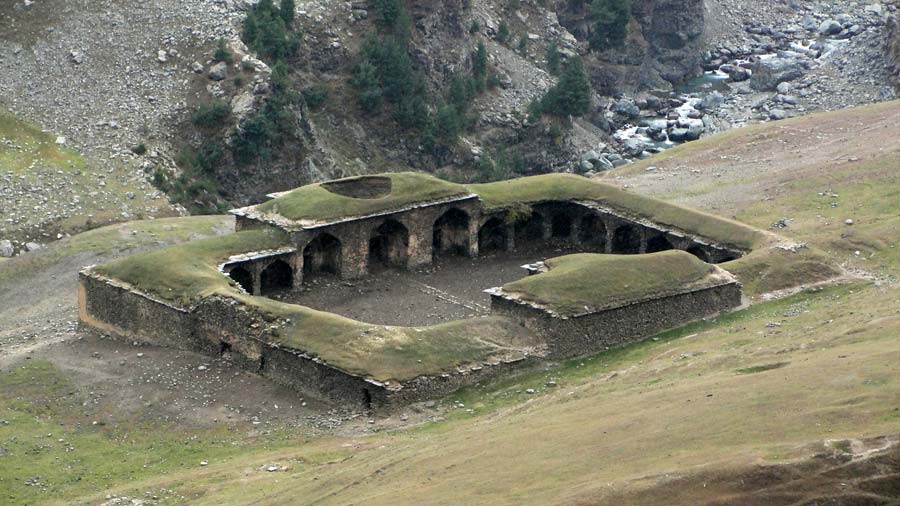



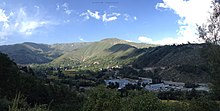


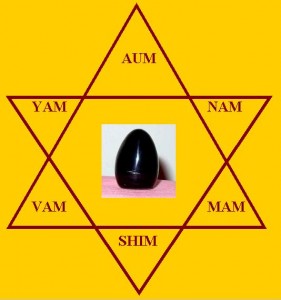
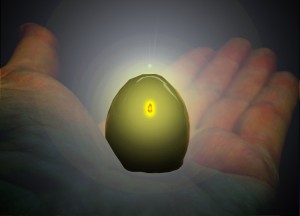
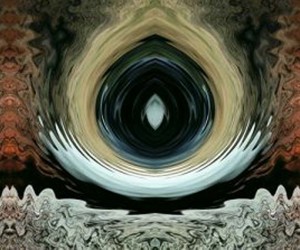
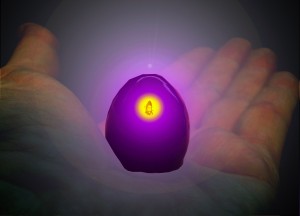
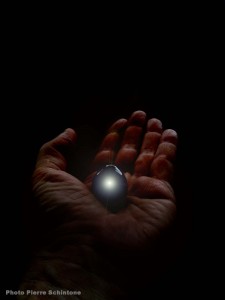
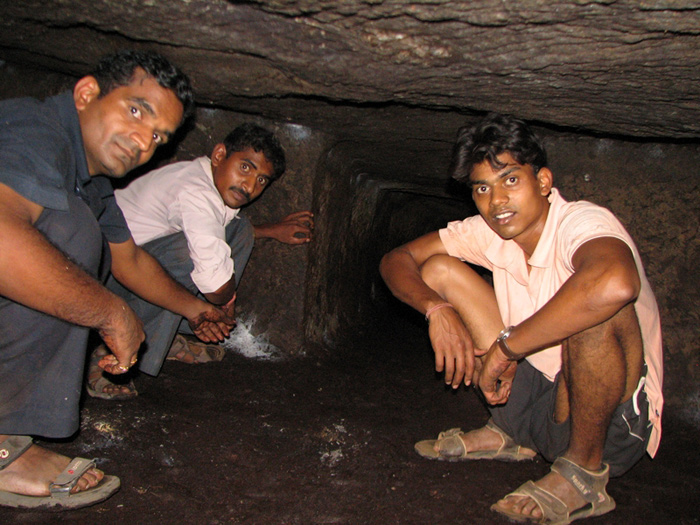
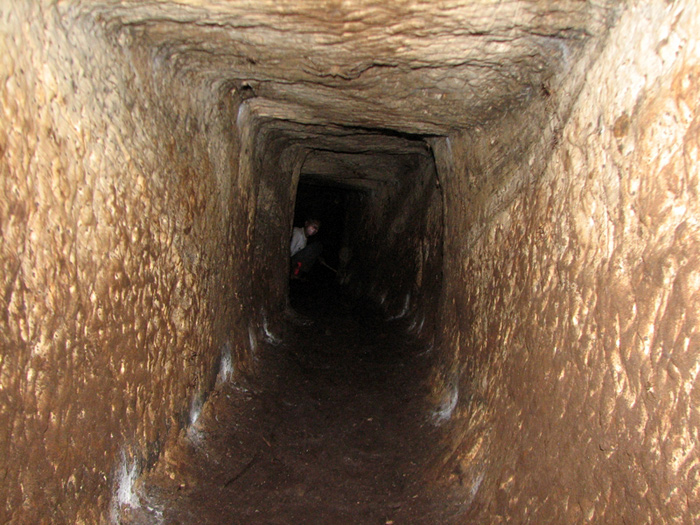
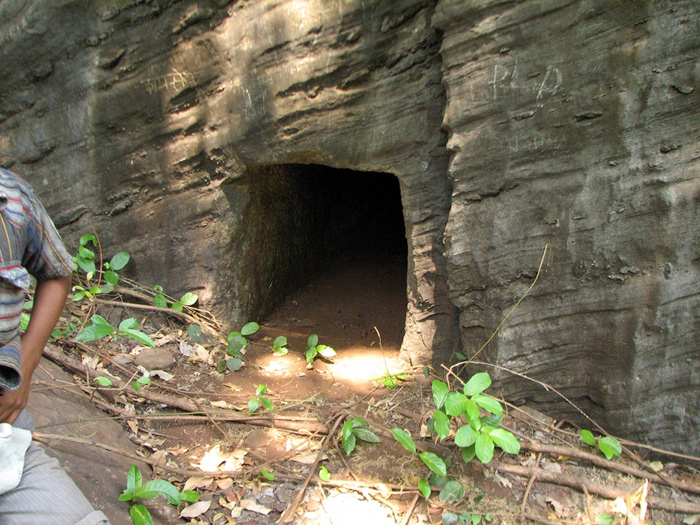
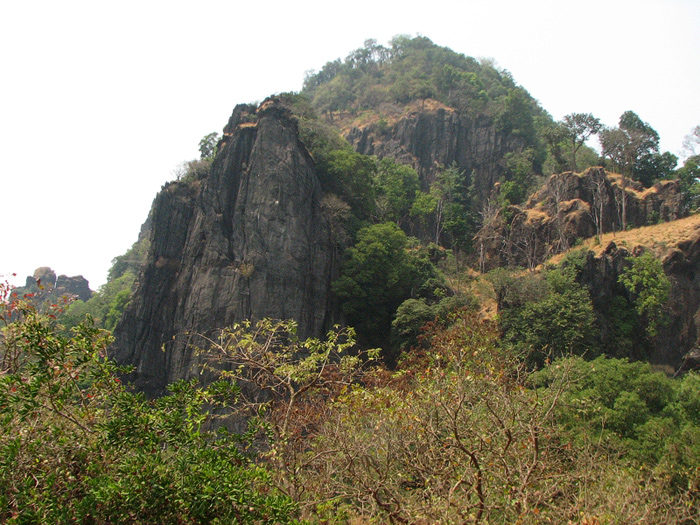
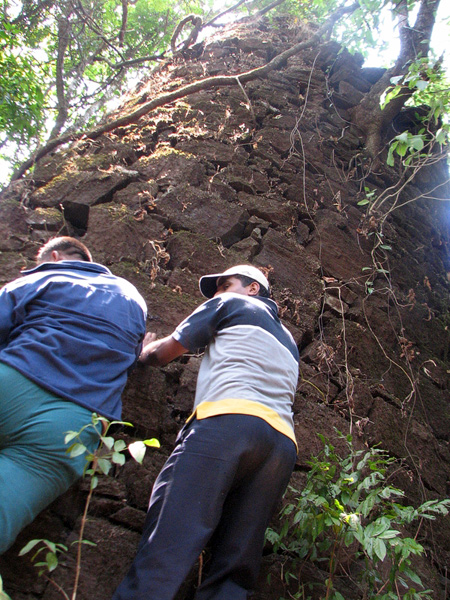
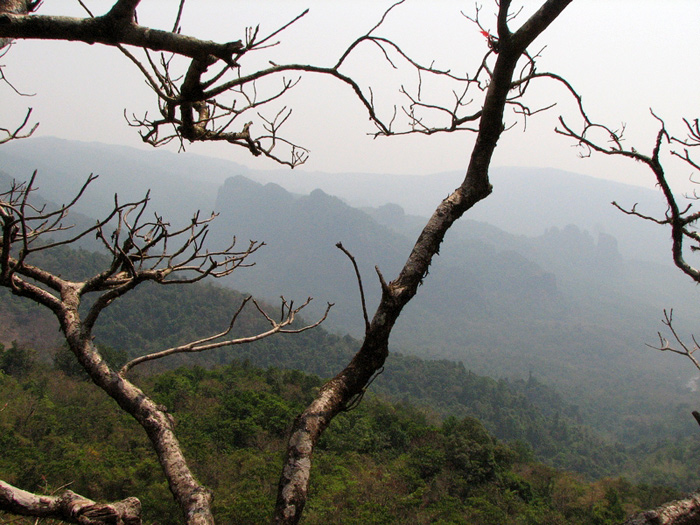
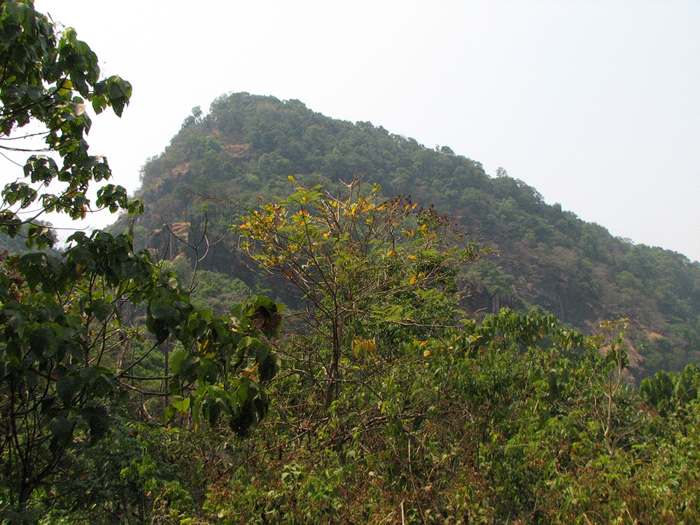
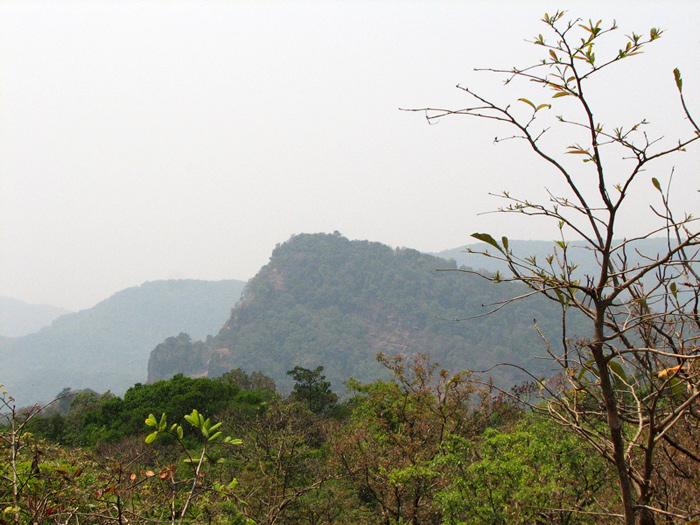
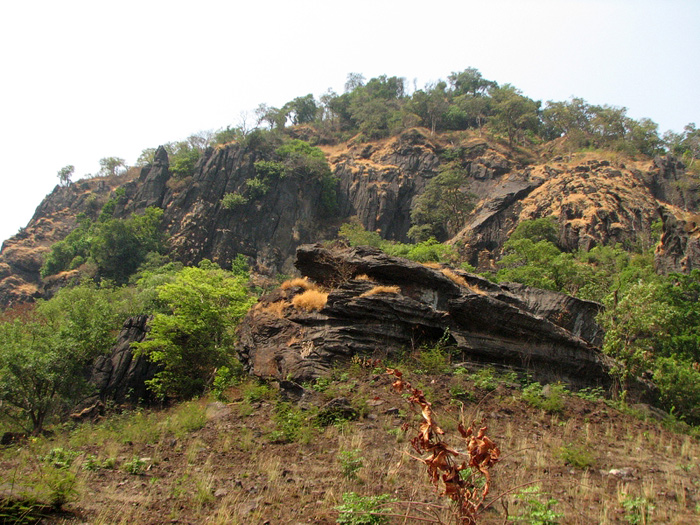
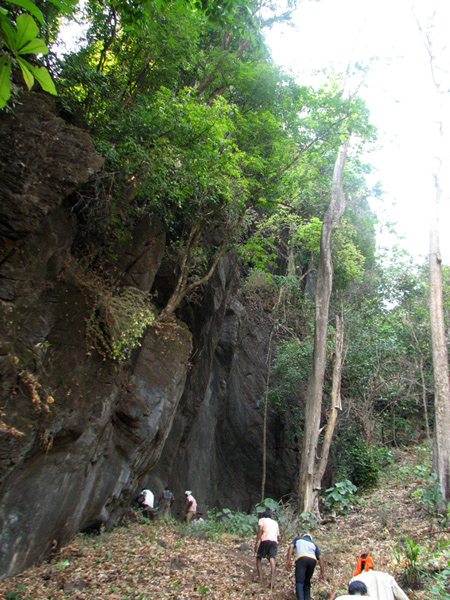
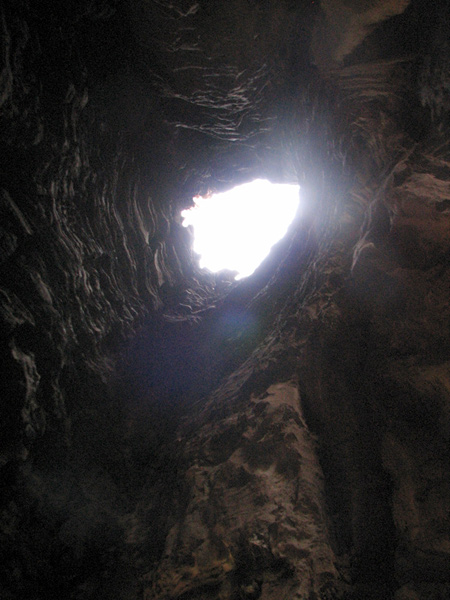
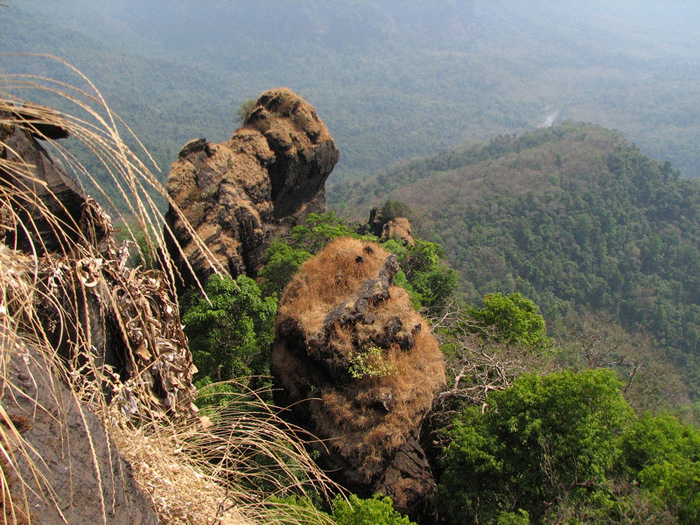
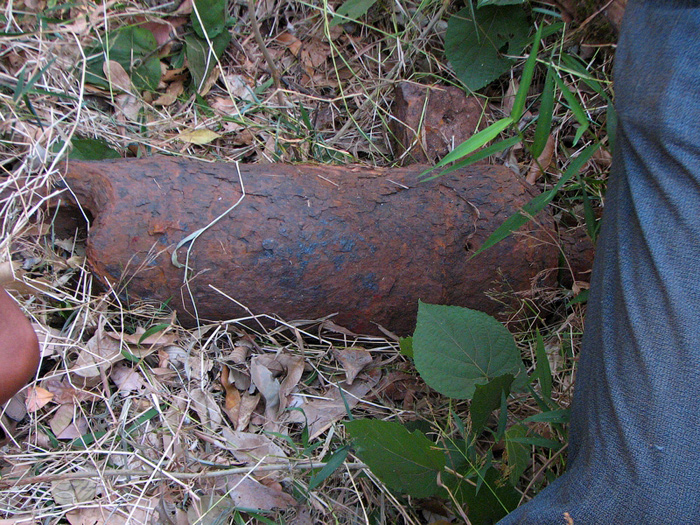
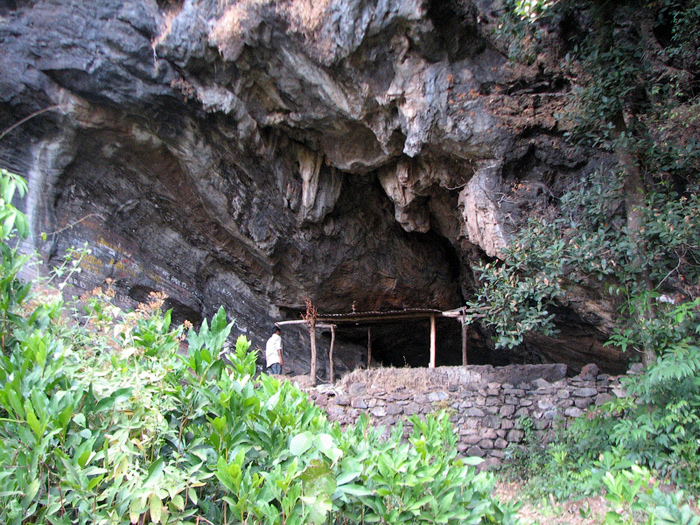
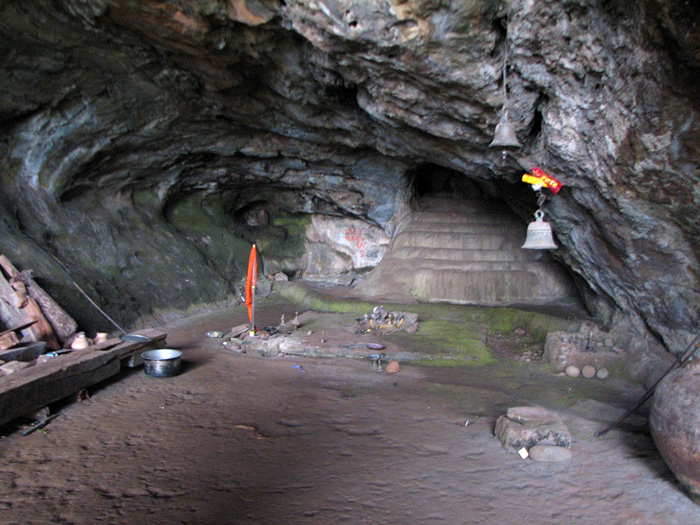
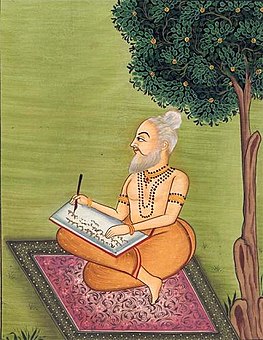







 Nearly 800 years
back, one of the temple nearby this region, which was administered by
the local royal family was destroyed in the war. The idol of Ganesha,
worshipped in this temple,
was found by cow
herd boys. These innocent boys carried this idol with bhajan, pooja all
along the way to the present place of worship and placed the idol under
the tree. Everyday they offered
Ganesha with tender
cucumber as naivedya, performed prayers, chanted bhajans. Hence from
then, this shrine derived the name SOWTHADKA. (In kannada
Southe(Cucumber) + Adka (A vast plain).
As per the hindu
vasthu tradition, Temples are built with Gopuras facing towards east,
idols of diety are installed.
Southadka’ is a
pilgrimage centre located at a distance of 3 km from Kokkada in
Belthangadi Taluk of Dakshina Kannda district. The uniqueness of the
place is Lord Maha Ganapathi is out in the open field without a ‘Garbha
gudi’ and temple structure. It is surrounded by fascinating greeneries
and open round the clock for offering prayers. About 35km from Kukke
Subramanya Temple is ‘Southadka Shree Mahaganapathi Kshetra’ in the
interiors of Kokkada. This is about 16km from Dharmasthala.
The temple is
decorated with lot of Bells mainly, offered by worshippers who have
special wishes. One can find lot of monkeys inside the temple. The
temple also serves food to all the devotees in the form of prasadam.
Temple is 6 km
from Patrame on the banks of river kapila.
Belthangady’s hidden
gem, It’s a unique temple with vast expanses of lush greenery.
Nearly 800 years
back, one of the temple nearby this region, which was administered by
the local royal family was destroyed in the war. The idol of Ganesha,
worshipped in this temple,
was found by cow
herd boys. These innocent boys carried this idol with bhajan, pooja all
along the way to the present place of worship and placed the idol under
the tree. Everyday they offered
Ganesha with tender
cucumber as naivedya, performed prayers, chanted bhajans. Hence from
then, this shrine derived the name SOWTHADKA. (In kannada
Southe(Cucumber) + Adka (A vast plain).
As per the hindu
vasthu tradition, Temples are built with Gopuras facing towards east,
idols of diety are installed.
Southadka’ is a
pilgrimage centre located at a distance of 3 km from Kokkada in
Belthangadi Taluk of Dakshina Kannda district. The uniqueness of the
place is Lord Maha Ganapathi is out in the open field without a ‘Garbha
gudi’ and temple structure. It is surrounded by fascinating greeneries
and open round the clock for offering prayers. About 35km from Kukke
Subramanya Temple is ‘Southadka Shree Mahaganapathi Kshetra’ in the
interiors of Kokkada. This is about 16km from Dharmasthala.
The temple is
decorated with lot of Bells mainly, offered by worshippers who have
special wishes. One can find lot of monkeys inside the temple. The
temple also serves food to all the devotees in the form of prasadam.
Temple is 6 km
from Patrame on the banks of river kapila.
Belthangady’s hidden
gem, It’s a unique temple with vast expanses of lush greenery. 





